Jean François Maurige
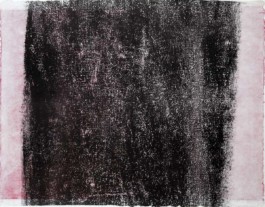
Premier jet 2, 1991
Lithograph on recto, woodcut on verso. 51×66 cm. Ed. 1/1.
Price on request.
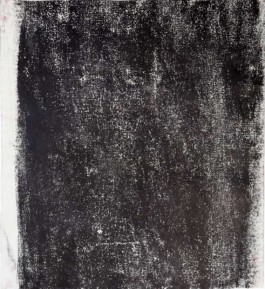
Premier jet 1, 1991
Lithograph on recto, woodcut on verso. 62×56,5 cm. Ed. 1/1.
Price on request.
Pièces Uniques, 1991-1992
Throughout the years 1991-92, Maurige continued to experiment, discovering all the possibilities offered by printing techniques - woodcut, stone, lithography, monotype, etching or linocut - but also the gestures created under pressure – rubbing, stamping, scraping...
In parallel with his Untitled series, he worked on other images of which only fifteen would be printed, signed and numbered 1/1. They are not monotypes, but rather lithographic trials printed in just one copy each.
Premier Jet I and Premier Jet II are Maurige's first two prints.
The six Glycéros/empreinte have the same format as Untitled, 1991, but here, the black drawing on the recto is not printed; it is handpainted by the artist, with the verso of the support printed in red.
In the two Billes frottements - the artist's first experience on lithographic stone - he tried another approach to covering the paper with color by rolling a multiplicity of balls of black alkyd paint dipped in litho ink over the entire surface of the stone. These two plates, as well as the four Litho + Aplat works, are very close in appearance to his paintings. Maurige, who at that time was seeking to accomplish something singular in his print work, set them aside and continued to explore other approaches.
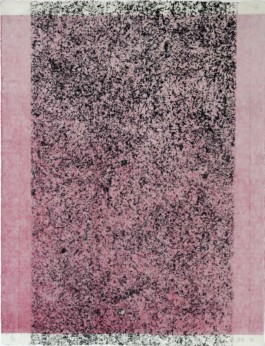
Litho + aplat IV, 1992
Lithograph on recto, woodcut on verso. 64×48,5 cm. Ed. 1/1.
Sold
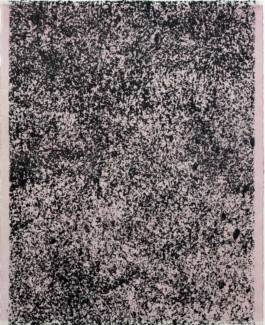
Litho + aplat II, 1992
Lithograph on recto, woodcut on verso. 61×48,5 cm. Ed. 1/1.
1 500 €
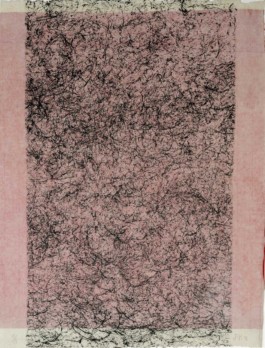
Frottage billes 2, 1992
Lithograph on recto, woodcut on verso. 64,5×50 cm. Ed. 1/1.
1 500 €
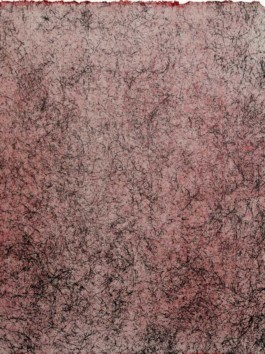
Frottages billes 1, 1992
Lithograph on recto, woodcut on verso. 64,5×50 cm. Ed. 1/1.
1 500 €
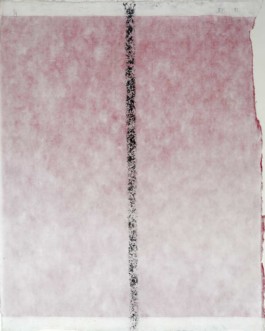
Litho + aplat 1, 1992
Lithograph on recto, woodcut on verso. 65×52 cm. Ed. 1/1.
1 500 €
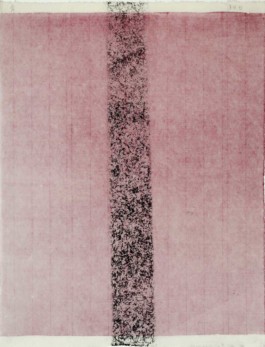
Litho + aplat V, 1992
Lithograph on recto, woodcut on verso. 62×56,5 cm. Ed. 1/1.
1 500 €
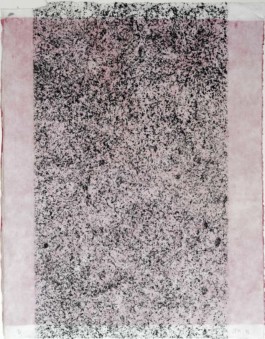
Litho + aplat III, 1992
Lithograph on recto, woodcut on verso. 65×51 cm. Ed. 1/1.
1 500 €
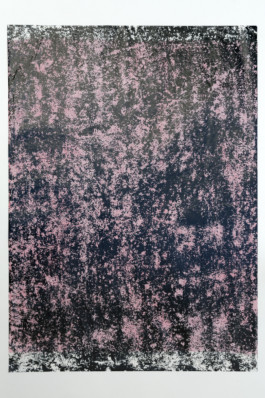
Empreinte glycéro I, 1991
Glycerophtalic paint on recto and woodcut on verso. 90×64 cm. Glassine paper 30g. Ed. I/I.
2 500 €
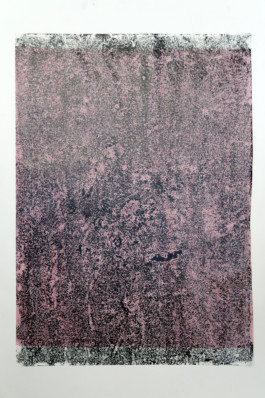
Empreinte glycéro II, 1991
Glycerophtalic paint on recto and woodcut on verso. 90×64 cm. Glassine paper 30g. Ed. I/I.
2 500 €
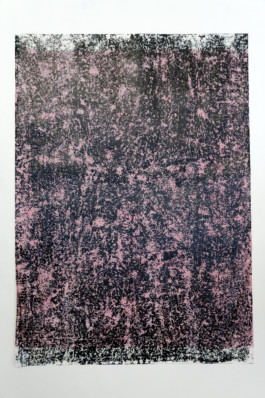
Empreinte glycéro III, 1991
Glycerophtalic paint on recto and woodcut on verso. 90×64 cm. Glassine paper 30g. Ed. I/I.
2 500 €
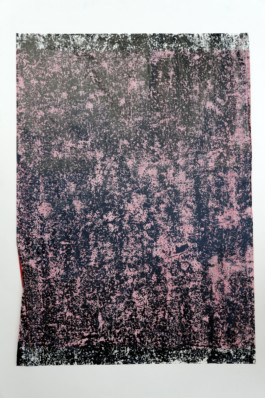
Empreinte glycéro IV, 1991
Glycerophtalic paint on recto and woodcut on verso. 90×64 cm. Glassine paper 30g. Ed. I/I.
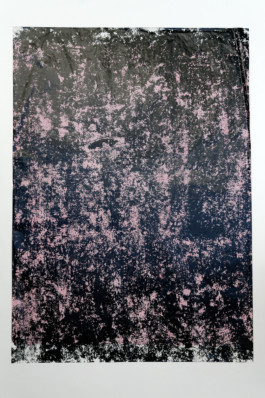
Empreinte glycéro V, 1991
Glycerophtalic paint on recto and woodcut on verso. 90×64 cm. Glassine paper 30g. Ed. I/I.
2 500 €
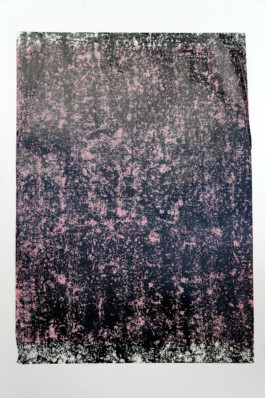
Empreinte glycéro VI, 1991
Glycerophtalic paint on recto and woodcut on verso. 90×64 cm. Glassine paper 30g. Ed. I/I.
2 500 €
Deux plaques, 2018
Two woodblocks were designed to create interlocking compositions: each block printed on both sides thus produced an overlapping effect. Unlike the previous series, this set of images required meticulous double-sided registration when printing. This is the first series in which Maurige’s editions were printed in blue.
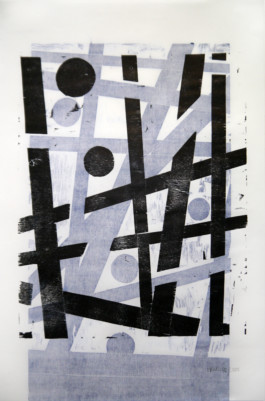
Deux plaques 3, 2018
Woodcut on Japanese paper. 77×52 cm. Ed. 7.
700 €
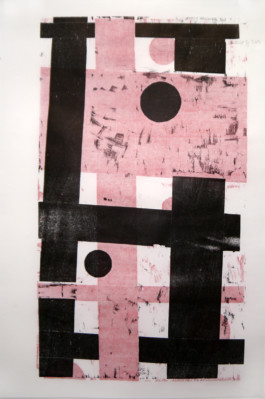
Deux plaques 1, 2018
Woodcut on Japanese paper.
77×52 cm. Ed. 7.
700 €
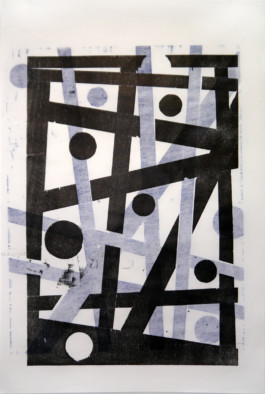
Deux plaques 2, 2018
Woodcut on Japanese paper.
77×52 cm. Ed. 7.
700 €
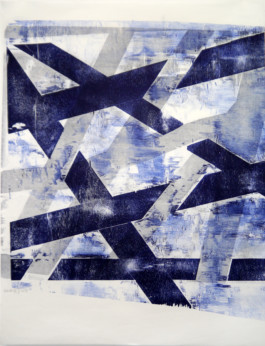
Deux plaques 5, 2018
Woodcut on Japanese paper.
85,5×63,5 cm. Ed. 7.
900 €
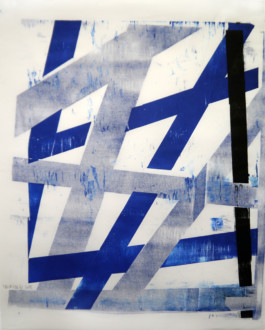
Deux plaques 4, 2018
Woodcut on Japanese paper. 65×52 cm. Ed. 7.
700 €
Perroquet & Banjo, 2015
The title of this series refers to the curve templates architects use to draw rounded forms. This is the first time that both sides of the paper were printed from a lithographic stone. In the case of Perroquet & Banjo II, the same composition was printed on recto and verso.
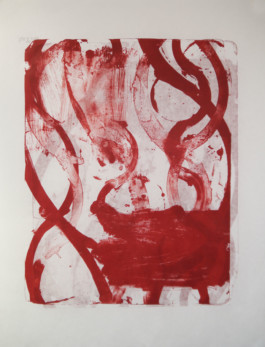
Perroquet & Banjo 2, 2015
Lithography 40g Japanese paper. 65×50,5 cm. Ed. 10.
800 €
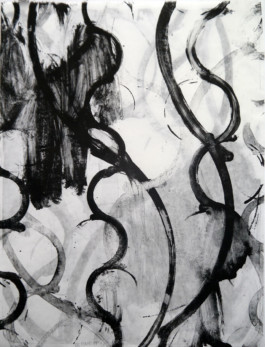
Perroquet & Banjo 1, 2015
Lithography 40g Japanese paper. 67×50 cm. Ed. 11.
800 €
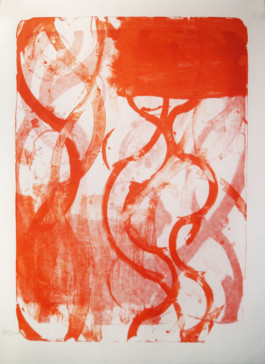
Perroquet & Banjo 3, 2015
Lithography 40g Japanese paper. 63×44 cm. Ed. 11.
800 €
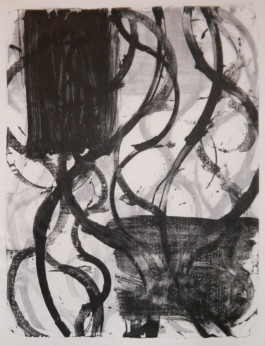
Perroquet & Banjo 4, 2015
Lithography on 40g Japanese paper. 80×60 cm. Ed. 7.
800 €
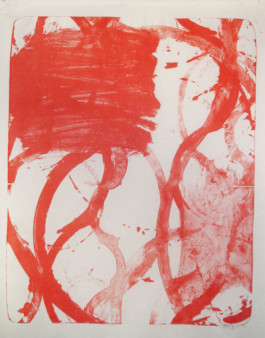
Perroquet & Banjo 5, 2015
Lithography 40g Japanese paper. 59×47 cm. Ed. 10.
800 €.
Obliques + Rayures, 2011
For this series of nine compositions, two years of trials were needed to find a balance between the oblique black traces and the red stripes, made with thin blocks of MDF (medium density fiberboard) and often printed on both sides of the Japanese paper. Here again, the prints are similar to the artist’s paintings at the time.
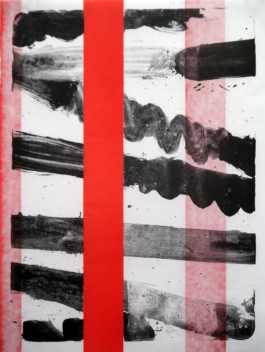
Obliques plus Rayures VIII, 2011
Lithography and woodcut on 60g Takogami paper. 63×48,5 cm. Ed. 9.
800 €
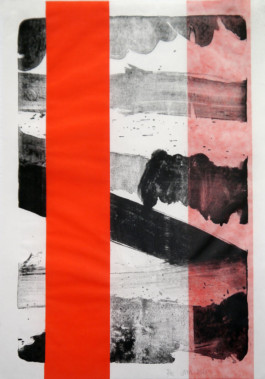
Obliques plus Rayures IX, 2011
Lithography and woodcut on 60g Takogami paper. 52,5×37 cm. Ed.12.
700 €
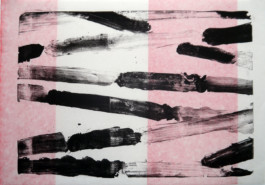
Obliques plus Rayures I, 2011
Lithography and woodcut on 60g Takogami paper. 65×89,5 cm. cm. Ed.11.
1 000 €
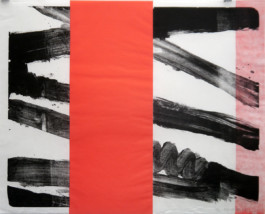
Obliques plus Rayures V, 2011
Lithography and woodcut on 60g Takogami paper. 53,5×64 cm. Ed. 15.
800 €
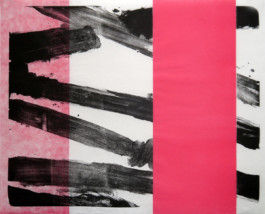
Obliques plus Rayures VI, 2011
Lithography and woodcut on 60g Takogami paper. 53×64,5 cm. Ed. 14.
800 €
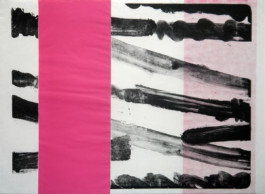
Obliques plus Rayures IV, 2011
Lithography and woodcut on 60g Takogami paper. 56×75,5 cm. Ed.12.
800 €
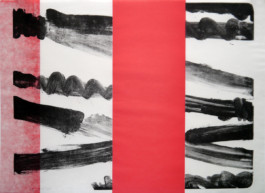
Obliques plus Rayures VII, 2011
Lithography and woodcut on 60g Takogami paper. 56×75,5 cm. Ed.12.
800 €
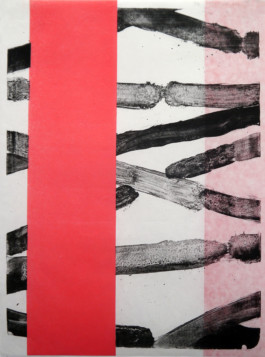
Obliques plus Rayures III, 2011
Lithography and woodcut on 60g Takogami paper. 68,5×52 cm. Ed.8.
800 €
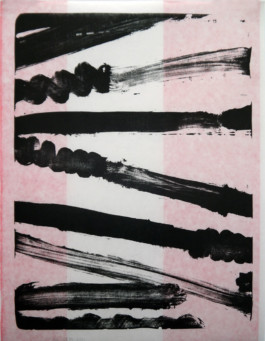
Obliques plus Rayures II, 2011
Lithography and woodcut on 60g Takogami paper. 70×55 cm. Ed.11.
800 €
Lithographie Trois Pierres, 2002
Three lithographic stones were placed on the ground, touching one another. The drawing was executed on all three stones in a single gesture. This is the largest print in Maurige’s body of work. Technically, it is a tour de force. The composition had to be reassembled on a single sheet of paper, with each stone passed through the press individually using a sophisticated marking system. An imprint from woodcut was added on the verso for color.
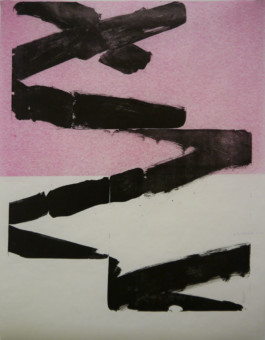
Lithographie Trois Pierres, 2002
Lithography on 120 g white kraft paper. 140×100 cm. Ed. 7.
Sold out.
Diverses pressions, 1997
Diverses pressions is Maurige’s most comprehensive work on plastic woven bags. Twelve compositions were printed on white bags stamped with advertising logos, graphic elements that the artist integrated into his compositions, and whose brands often gave these works their titles. For some images, the black shape was printed from recycled, corrugated plastic sheets cut with an X-Acto knife.
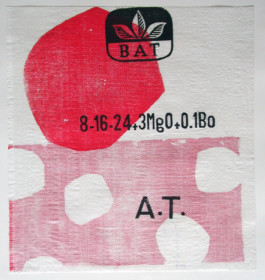
A.T., 1997
Woodcut on woven plastic bulk bag. 59×76 cm. Ed. 7.
800 €
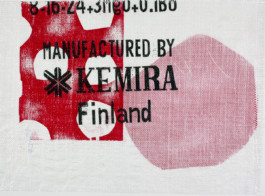
Small Kemira, 1997
Woodcut on woven plastic bulk bag. 39×54 cm. Ed. 7.
700 €
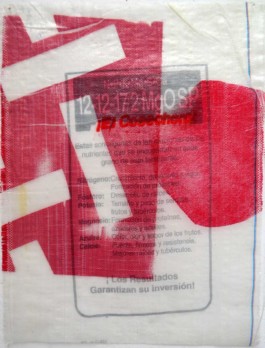
El cosechero, 1997
Woodcut on woven plastic bulk bag. 70×54 cm. Ed. 7.
800 €
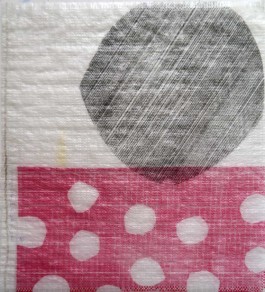
Horizontal sans texte, 1997
Woodcut on woven plastic bulk bag. 57×49 cm. Ed. 7.
800 €

Manufactured by, 1997
Woodcut on woven plastic bulk bag. 74×54 cm. Ed. 7.
800 €
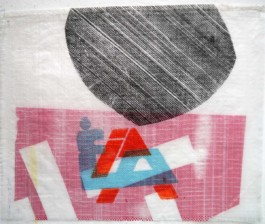
Algérie II, 1997
Woodcut on woven plastic bulk bag. 52×56 cm. Ed. 7.
800 €
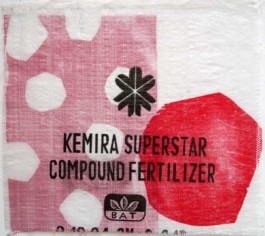
Kemira Superstar, 1997
Woodcut on woven plastic bulk bag. 47×55 cm. Ed. 7.
800 €
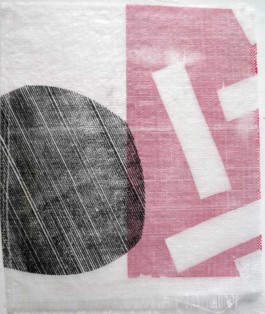
Vertical sans texte, 1997
Woodcut on woven plastic bulk bag. 57×52 cm. Ed. 7.
800 €
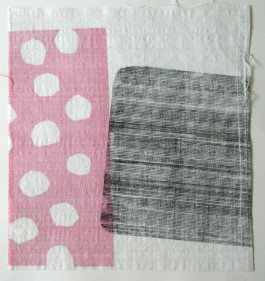
Rectangle noir, 1997
Woodcut on woven plastic bulk bag. 57×52 cm. Ed. 7.
800 €
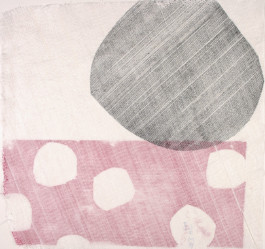
Croisé, 1997
Woodcut on woven plastic bulk bag. 52×67 cm. Ed. 7.
800 €
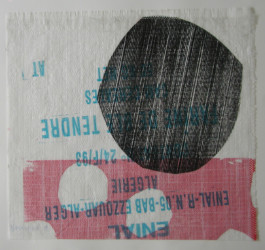
Algérie 1, 1997
Woodcut on gravel sack. 52×57 cm. Ed. 7.
800 €
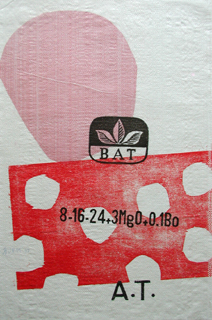
BAT, 1997
Woodcut on gravel sack. 77×54 cm. Ed. 7.
800 €
Polypropylène polyéthylène, 1996
The year 1996 marks an important turning point in Maurige's printed work. He continued to experiment with ideas about luminosity by exploring the use of plastic supports. The first tests were done on transparent bubble wrap, but the method was quickly abandoned since the ink flaked upon drying. Maurige then imagined working on plastic rice bags used for transporting raw materials. The bags were recycled for handling rubble: printed and woven, their surfaces evoked the translucent papers used in the print shop for his previous series. The bags were cut open in two, like sheets of paper. On the recto, shapes printed in black were cut out of bits of plywood found in the street; a flat (or nearly flat) red covers the verso.
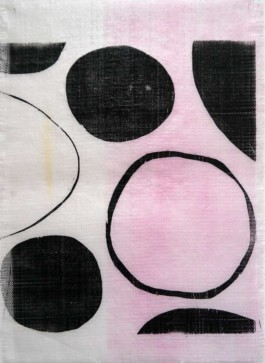
Polypropylène polyethylene II, 1996
Woodcut on construction sack.
98×70 cm. Ed. 7.
1 200 €
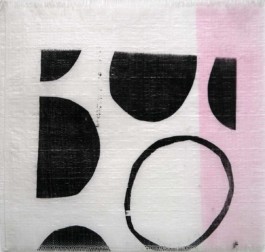
Polypropylène polyethylene IV, 1996
Woodcut on construction sack. 62×67 cm. Ed.7.
800 €
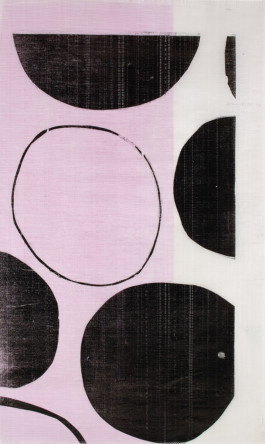
Polypropylène Polyéthylène I, 1996
Woodcut. 114×70 cm. Ed. 7.
1 200 €
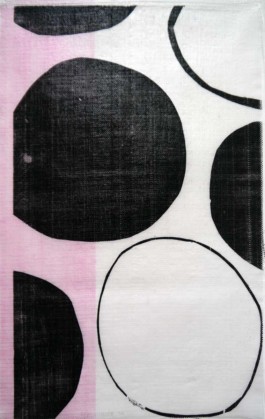
Polypropylène polyethylene III, 1996
Woodcut on construction sack. 98×60 cm. Ed. 7.
1 200 €
Polypropylène polyéthylène rose double face, 1996
These two images were printed using the same process – woodcut printed on both sides of a woven plastic rice bag - but in a larger format and here, only in pink.
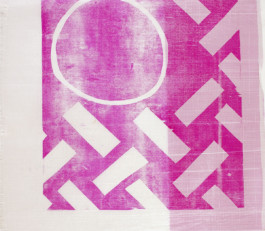
Polypropylène Polyéthylène Rose Double-Face II, 1996
Woodcut. 88×98 cm. Ed. 7.
1 200 €
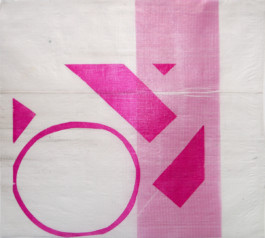
Polypropylène polyéthylène rose double face I, 1996
Woodcut on gravel sack.
85×97 cm. Ed 8.
1 000 €
Sac plein, 1999
Sac plein concludes this exploration on plastic material. Only one such edition was made. Maurige used the bag uncut, intact, without modification, printed inside and outside. Once printing was completed, the bag was filled with gravel, the work thus becoming a volume, empty, full, horizontal or vertical.
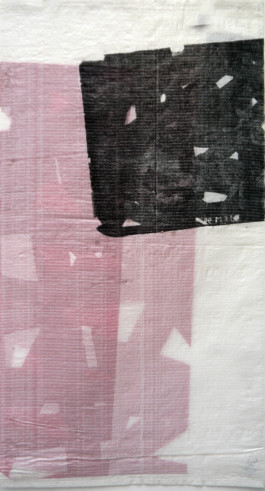
Sac plein, 1999
Woodcut & lithography on construction sack filled with debris. 130×70cm. Ed. 6.
1 200 €
95 I-IV, 1995
This series of four lithographs is the only series by Maurige with one single color pass, in which the images were not conceived on both sides of the support. Here, his intention recalls that of his paintings, with the use of frottage and red shapes.
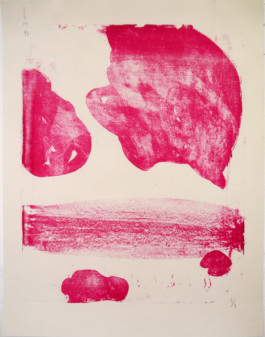
95 II, 1995
Lithograph on glassine. 58×47 cm. Unique proof.
1 000 €
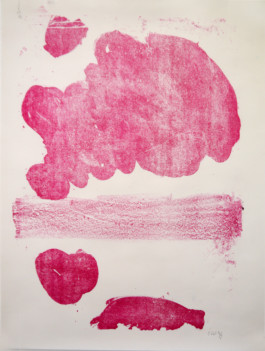
95 I, second state, 1995
Lithograph on glassine. 776,5×58 cm. Ed. 7.
700 €
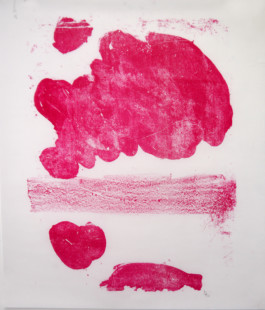
95 I, 1995
Lithograph on glassine. 77,5×64 cm. Ed. 10.
700 €
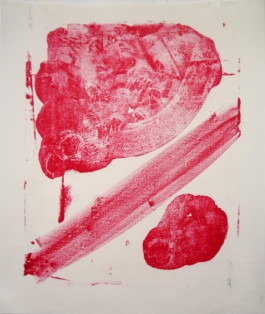
95 III, 1995
Lithograph on glassine. 56×49 cm. Unique proof.
1 000 €
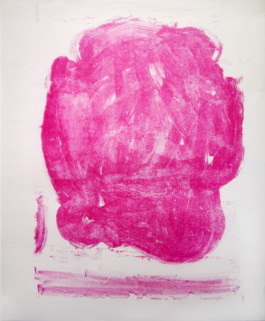
95 IV, 1995
Lithograph on glassine. 77,5×64,5 cm. Ed. 7.
700 €
93–08, I-VII, 2008
In lithography, the act of printing always begins with graining the surface of the stone to receive the drawing. Lithographic stones, which are made of limestone and date back to the 19th century, are carefully sanded with sand and water to eliminate the previous composition and obtain a flat, uniform surface, considered essential for a "successful" lithograph. In this set of seven lithographs, begun in 1993, the artist subverted this ritual. In four compositions, he used the back of the stones in their original state, without graining. For the other three, he asked for stones polished with the largest possible grain size, creating surfaces like coarse sandpaper. He then covered the stone in ink or lithographic pencil. Fifteen years later, in 2008, these images were reworked with the addition of a second color pass in red on the verso.
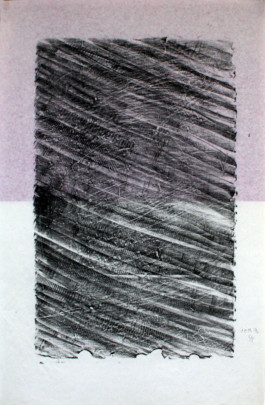
93-08.IV, 2008
Lithography. 100×65 cm. Ed. 7.
1 200 €
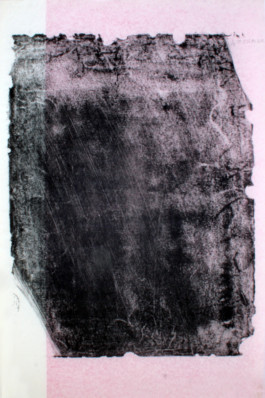
93-08.I, 2008
Lithography. 100×65 cm. Ed. 7.
1 200 €
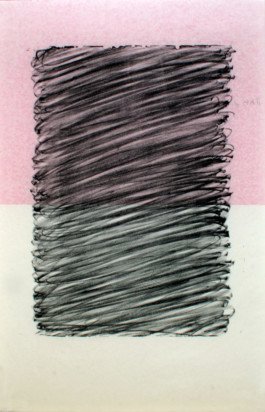
93-08.III, 2008
Lithography. 100×65 cm. Ed. 7.
1 200 €
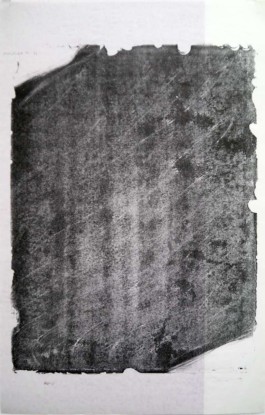
93 – 08 II, 2008
100×65 cm. Glassine. Ed. 7.
1 200 €
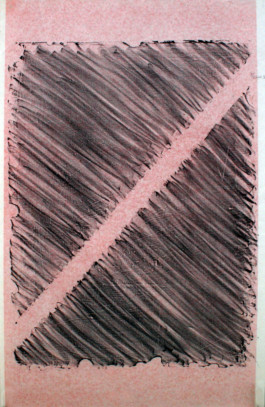
93-08. VI, 2008
Lithography. 100×65 cm. Ed. 7.
1 200 €
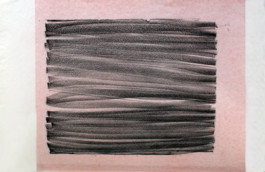
93-08.V, 2008
Lithography. 100×65 cm. Ed. 7.
1 200 €
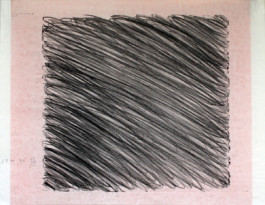
93-08 VII, 2008
Lithography. 50×65 cm. Ed. 7.
800 €
Untitled, 1991
This first collaboration with the Woolworth print shop is the result of several months of experimentation on the concepts of luminosity, opacity, density and translucency, by making double-sided prints on very fine, sometimes almost transparent papers. For this series of four lithographs, Maurige first made drawings with alkyd paint, creating "allover" textures in black on a kind of glassine paper. The drawings were then transferred to metal lithographic plates through light exposure. The drawings were printed in lithography in black on the recto of the support, and on the verso in red with a wooden board, thus establishing the artist’s printmaklng vocabulary.
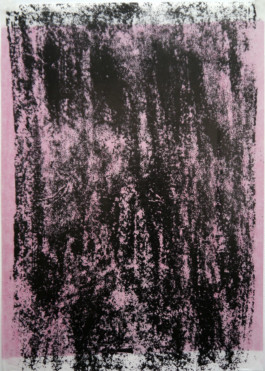
Untitled 1, 1991
Double face Lithograph on glassine 30g. 102×70 cm. Ed. 7.
1 200 €
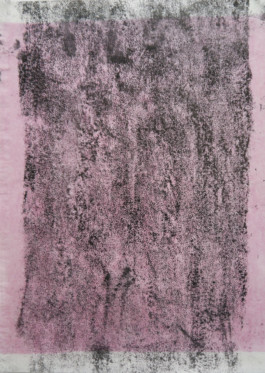
Untitled 2, 1991
Double face Lithograph on glassine 30g. 102×70 cm. Ed. 7.
1 200 €
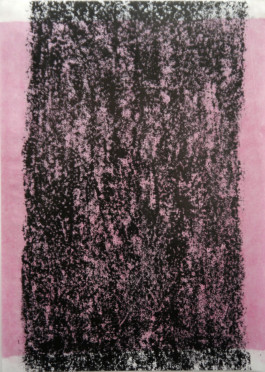
Untitled 3, 1991
Double face Lithograph on glassine 30g. 102×70 cm. Ed. 7.
1 200 €
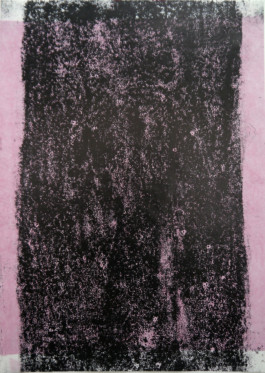
Untitled 4, 1991
Double face Lithograph on glassine 30g. 102×70 cm. Ed. 7.
1 200 €
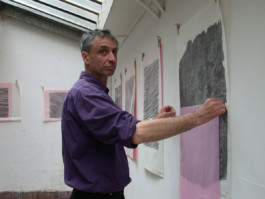
Jean François Maurige
Born in 1954 in Yssingeaux (France).
Lives and works in Paris.
Since 1991, we’ve collaborated very frequently with this artist, whose work has an ascetic quality: he paints in white acrylic on red canvas, then uses frottage to add red shapes or wide black stripes to the composition. We have long explored ideas of luminosity and translucency, including printing on both sides of ultra-thin papers to surprising effect. This research led to two sets of unorthodox images in 1996 printed on translucent, woven plastic bags. Today, we are pursuing new approaches in a project printed on fine Japanese paper.
2024 — 2000
Abdelkader Benchamma
Carole Benzaken
Stéphane Bordarier
Claire Chesnier
Ludovic Chemarin©
Paul Collins
Gunter Damisch
Armelle de Sainte Marie
Mélanie Delattre-Vogt
Didier Demozay
Marc Desgrandchamps
Blaise Drummond
Jim Dine
Brecht Evens
Philippe Favier
Gilgian Gelzer
Richard Gorman
Marie-Ange Guilleminot
Bruno Hellenbosch
Lamarche Ovize
Bertrand Lavier
Pierre Le-Tan
Frédérique Loutz
Mirka Lugosi
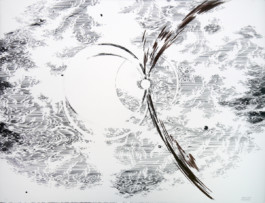
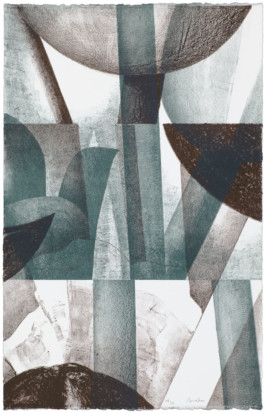
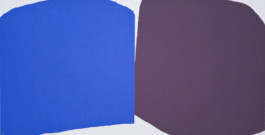
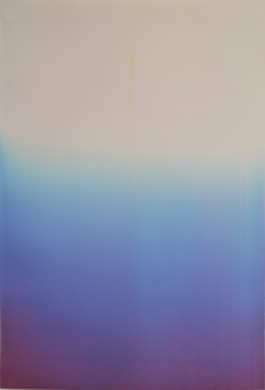
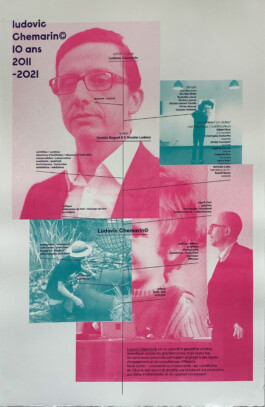
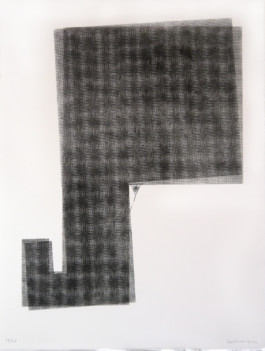
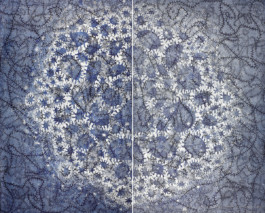
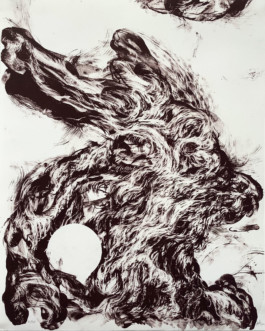
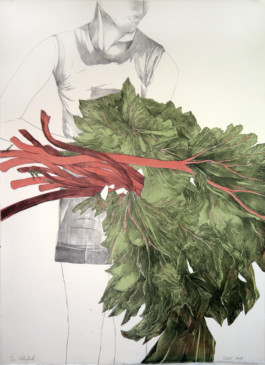
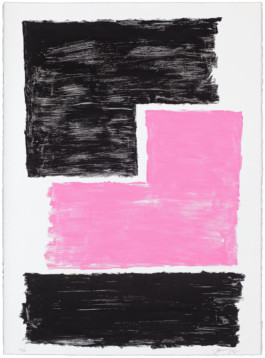
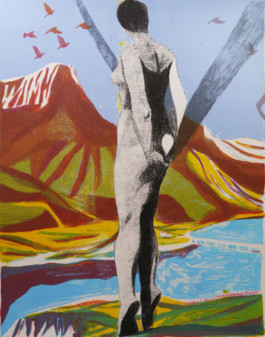
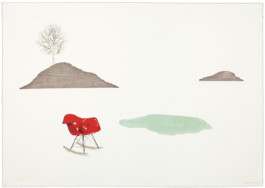
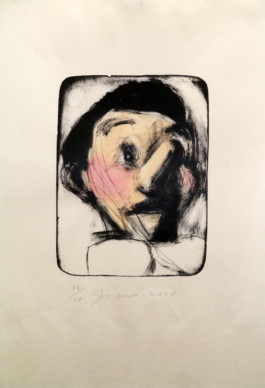
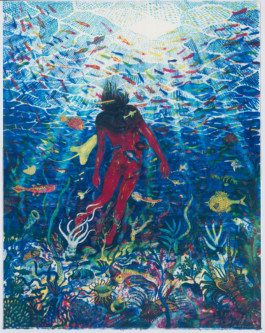
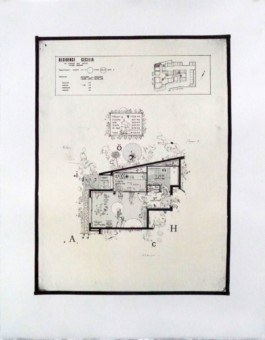
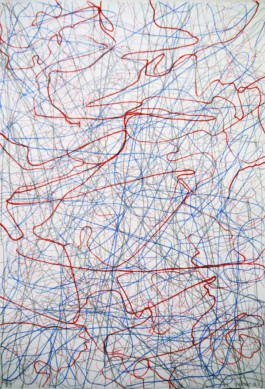
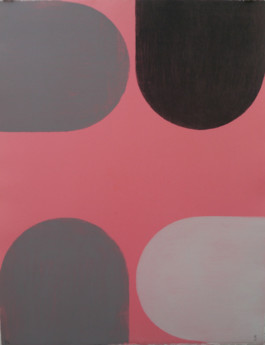
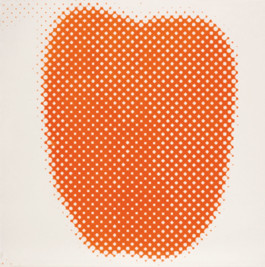
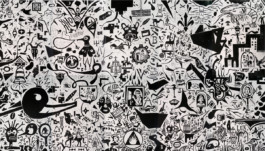
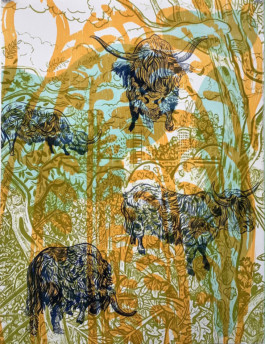
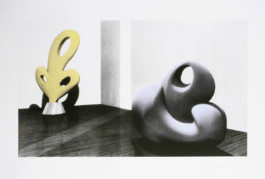
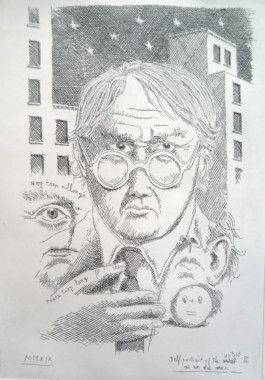

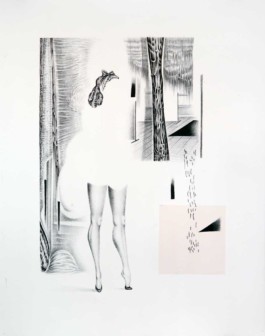
Pierre Mabille
William MacKendree
Matt Magee
Maude Maris
Jean François Maurige
Kate McCrickard
Miquel Mont
Daniel Nadaud
Farhad Ostovani
Marielle Paul
Stéphane Pencréac’h
Jaume Plensa
Anne et Patrick Poirier
François Righi
Johann Rivat
Katia Santibanez
Christian Schwarzwald
Massinissa Selmani
David Shrigley
José Maria Sicilia
James Siena
Peter Soriano
Djamel Tatah
Barthélémy Toguo
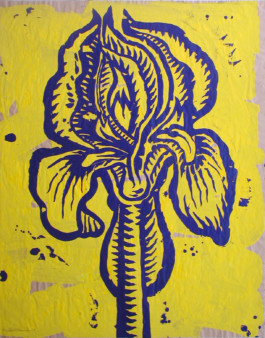
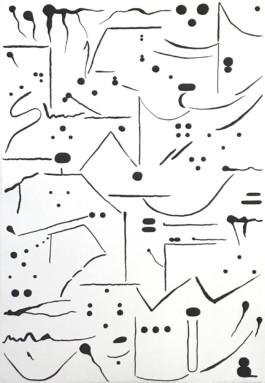
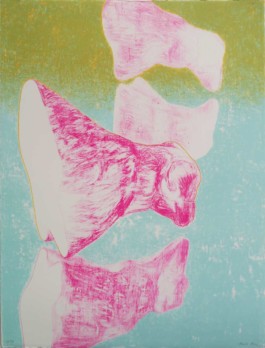

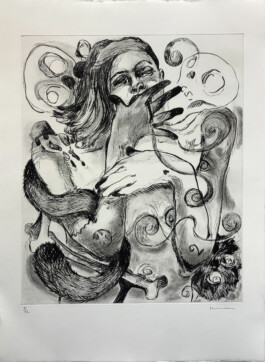
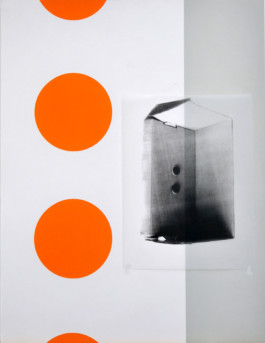
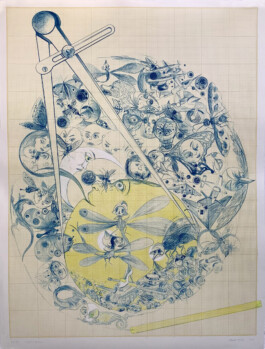
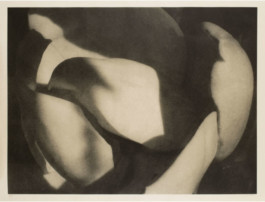
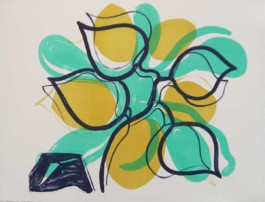
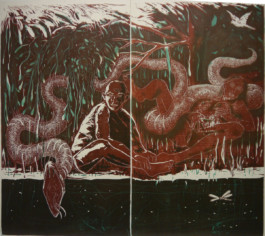
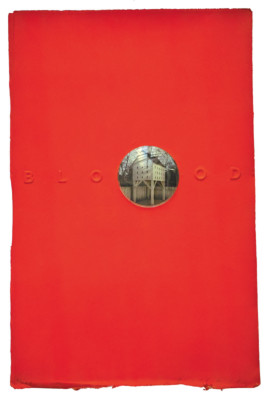
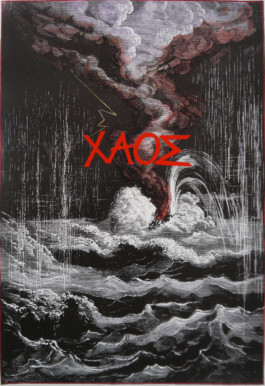
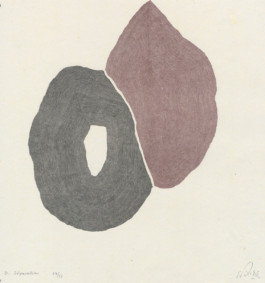
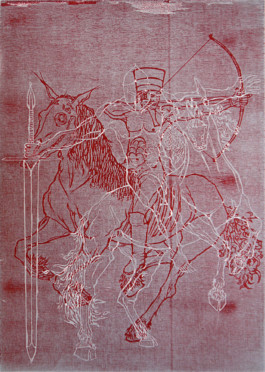
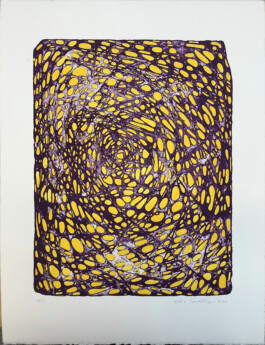
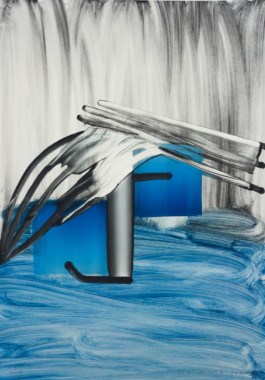
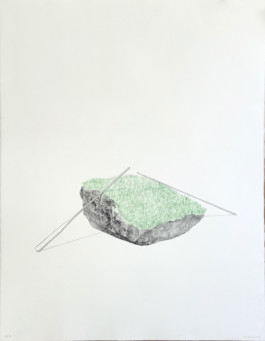
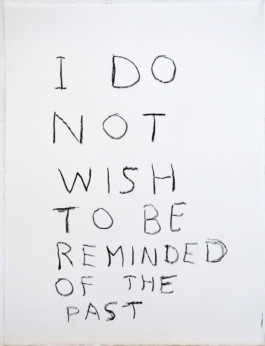
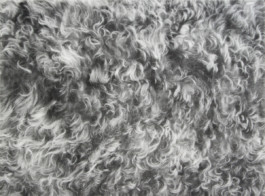
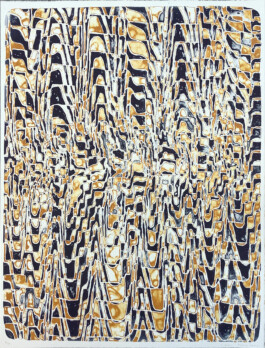
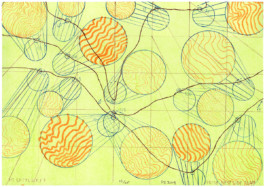
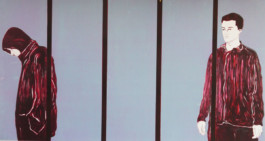
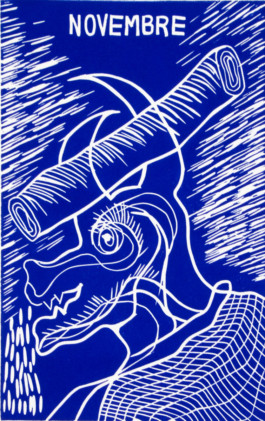
Artists’ books
1999 — 1979
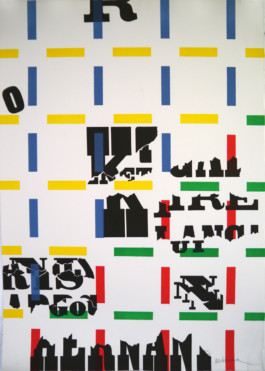
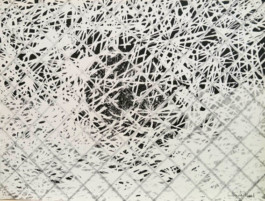
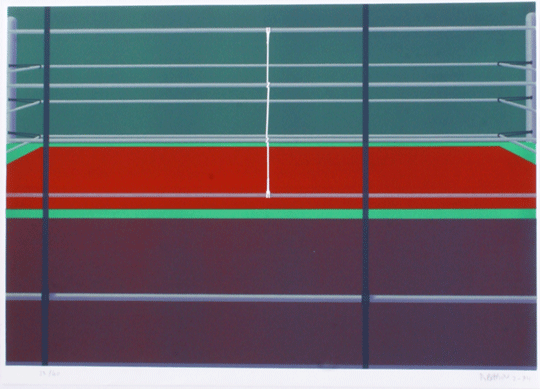
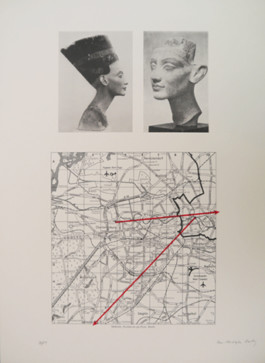

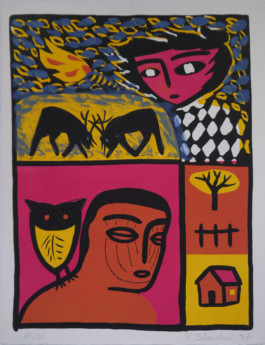

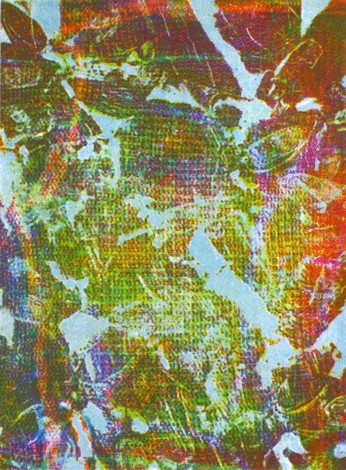
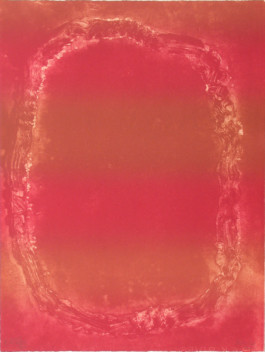
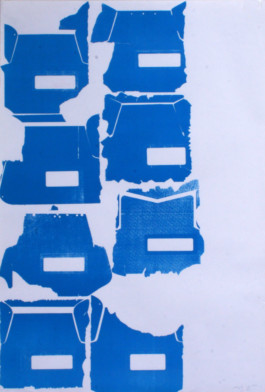
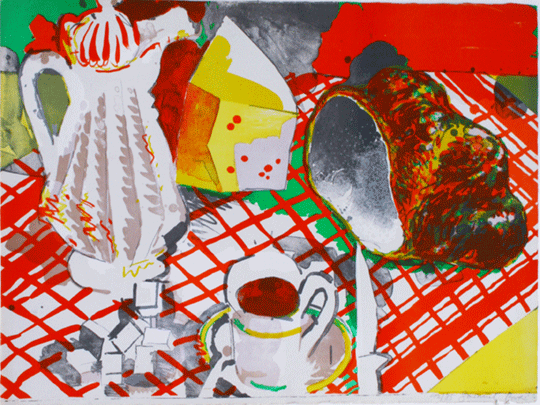
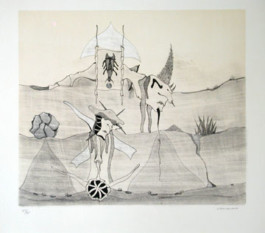
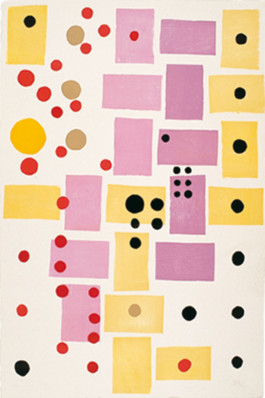
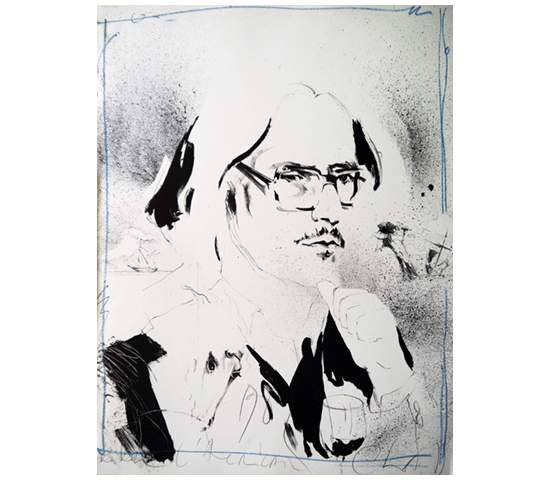
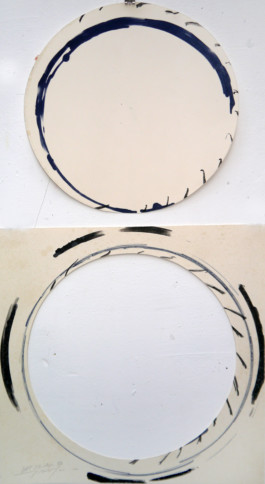
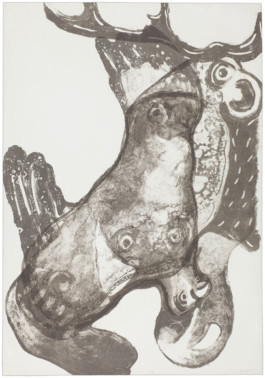
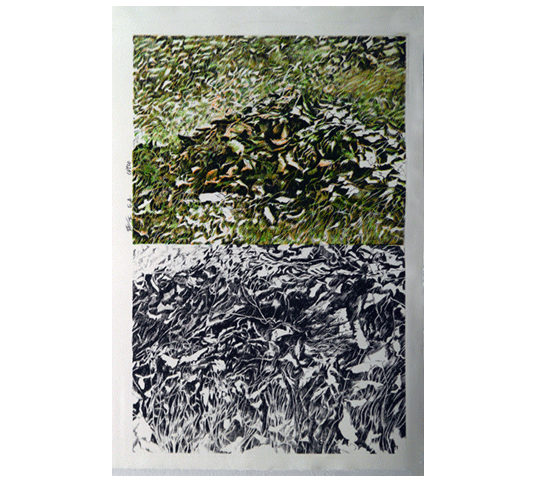
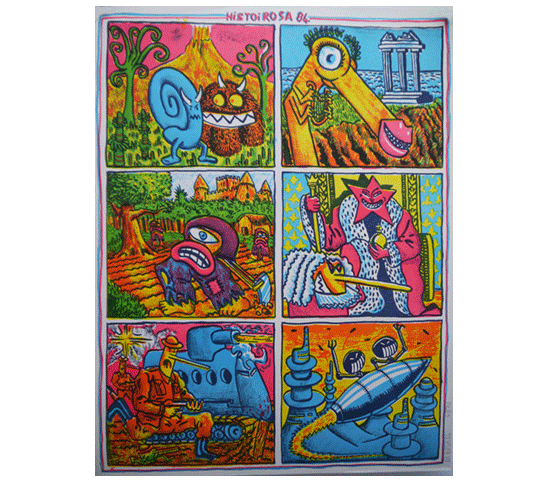
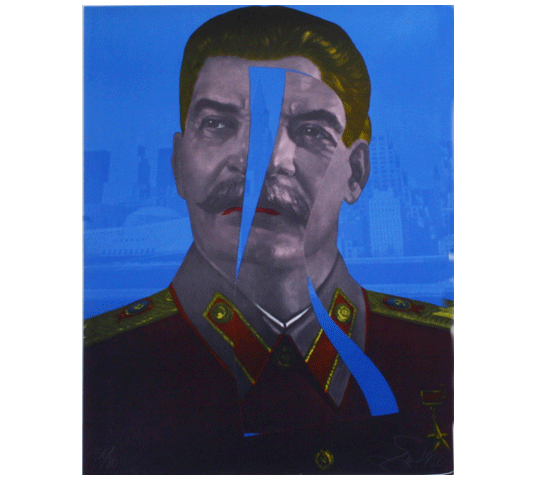
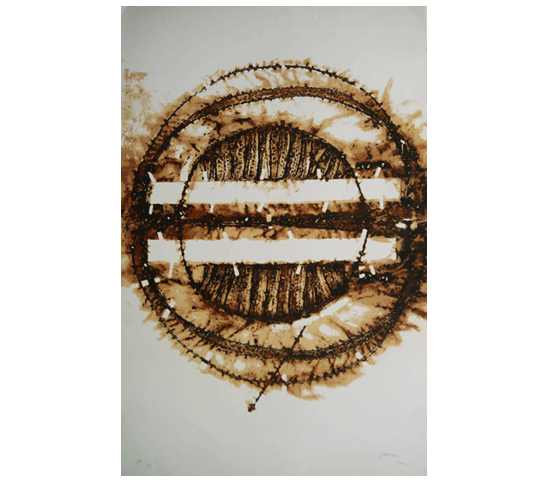
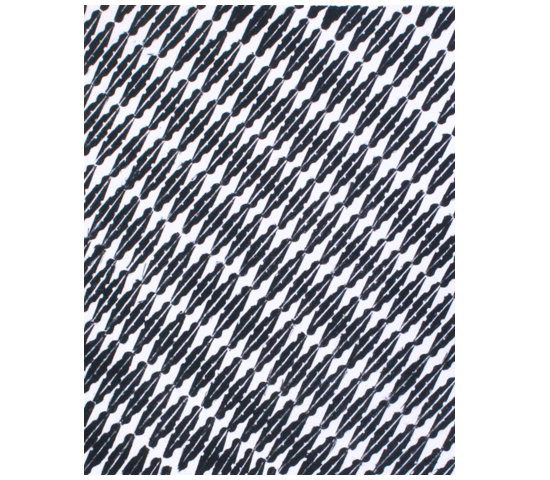

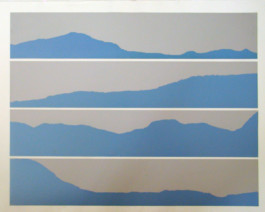
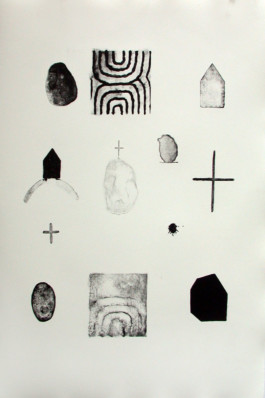
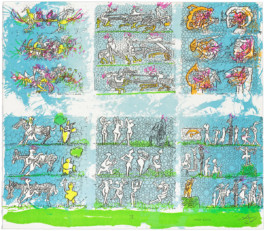
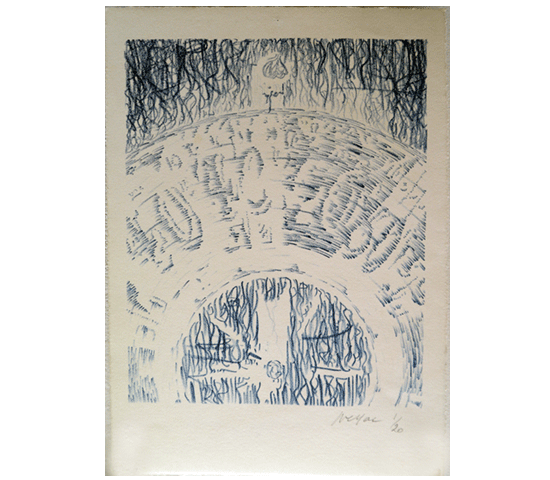
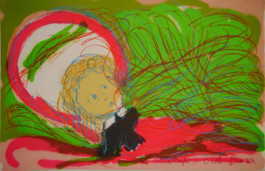
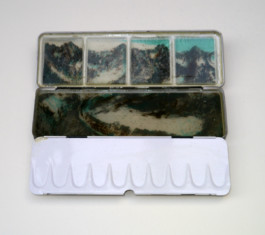
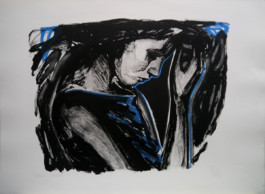
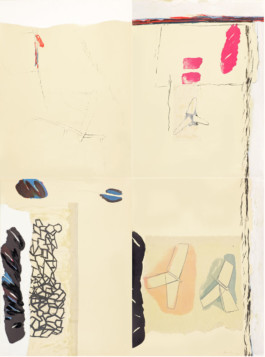
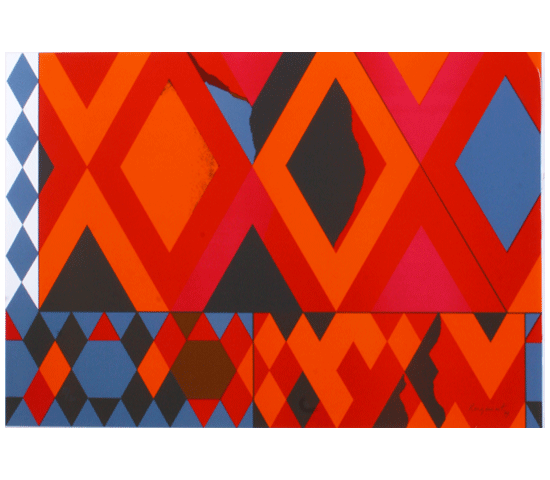
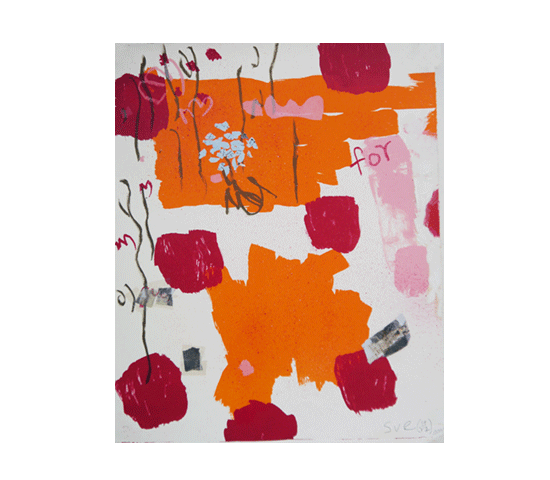







| Cookie | Duration | Description |
|---|---|---|
| cookielawinfo-checkbox-analytics | 11 months | This cookie is set by GDPR Cookie Consent plugin. The cookie is used to store the user consent for the cookies in the category "Analytics". |
| cookielawinfo-checkbox-functional | 11 months | The cookie is set by GDPR cookie consent to record the user consent for the cookies in the category "Functional". |
| cookielawinfo-checkbox-necessary | 11 months | This cookie is set by GDPR Cookie Consent plugin. The cookies is used to store the user consent for the cookies in the category "Necessary". |
| cookielawinfo-checkbox-others | 11 months | This cookie is set by GDPR Cookie Consent plugin. The cookie is used to store the user consent for the cookies in the category "Other. |
| cookielawinfo-checkbox-performance | 11 months | This cookie is set by GDPR Cookie Consent plugin. The cookie is used to store the user consent for the cookies in the category "Performance". |
| viewed_cookie_policy | 11 months | The cookie is set by the GDPR Cookie Consent plugin and is used to store whether or not user has consented to the use of cookies. It does not store any personal data. |